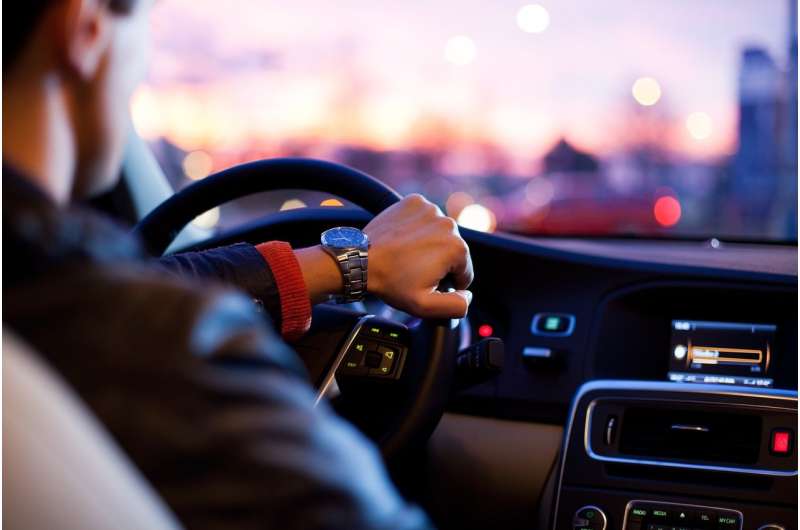Here's why the Uber, Lyft protests might not even work

A loose network of ride-hailing drivers took to the streets without their cars from San Diego to Atlanta on Wednesday as they protested ahead of Uber's highly anticipated initial public offering, which is scheduled for Friday.
In Los Angeles, about two dozen protesters took time off work to gather in the early morning at LAX. Meanwhile, tons of working Uber and Lyft drivers dropped passengers off at the airport. In Long Island City, Queens, a lone protester held a sign that read "Uber, Lyft, Juno, Via drivers on strike" as several ride-sharing cars swarmed the area to pick up commuters requesting rides.
Five days in advance, organizers urged drivers to abstain from using ride-hailing apps for durations ranging from two hours to a whole day. The action was poised to put a dent in Uber's biggest markets across the globe, organizers said.
Uber told USA TODAY there was no noticeable impact in their daily operations.
Only about a dozen drivers showed up to a rally in New York City's Financial District Friday morning, and according to local news outlets in Boston, it was a normal day at the airport for travelers trying to hitch a ride using an app. Though later in the day, drivers and protesters blocked traffic on Market Street in front of Uber's San Francisco headquarters.
So what happened?
It's hard to tell exactly.
Experts say that everything from a disconnected workforce to disinterested drivers can be to blame. Not to mention, not everyone can take time off during peak driving hours to protest a job that their livelihood relies on.
DRIVERS
A wide range of people work for ride-share companies including college students looking to make extra money between classes and chauffeurs who support their families using the optional tips you leave at the end of your trip.
That diverse and disjointed workforce might work against organizers who are hoping for big turnouts.
"Some drivers will be deeply invested, and others may say 'I don't care about that,'" said Fabio Rojas, a professor of sociology at Indiana University who has written books on social movements. "There's a lot of natural variation that could keep a protest from getting off the ground."
Unlike workers who share an office space, ride-hailing drivers typically don't have to interact with one another. While they may have coordinated social meetups, "those groups aren't really built for politics," Rojas said.
"It's one thing to have a barbecue, it's another thing to set up a rally or to really encourage people to protest."
Also, not everyone is dissatisfied with their jobs.
Scott Steinbrink, 51, said that he's not protesting because he's happy with how much he makes driving for Lyft and he prefers the flexible schedule.
"I enjoy my work. I enjoy driving. So I don't have any complaint," said Steinbrink, who resides in Atlanta. "We're not employees of Uber and Lyft. We're contractors. We decide our hours, not them. So I disagree with the protest entirely."
RIDERS
There's no doubt that passengers drive the demand for convenient rides.
Ninety-five million people use the Uber app on a monthly basis. So while organizers urge riders to put down the app, many commuters have grown to depend on services like Uber and Lyft.
Unlike factory work where a relatively small number of people could halt a company's output, a few drivers taking the day off hardly disadvantages commuters in competitive cities, Rojas says.
"If you have tens of thousands of drivers in the area, even if a thousand got together to protest, the other 9,000 or so will still be driving," Rojas said.
"And another 9,000 may not even know a protest is going on. But in a factory, you'll know if something is happening at work."
ORGANIZERS
Convincing people that their attendance matters is one of the biggest hurdles organizers of protests face, Rojas said.
"No one wants to be the one guy out there in front of the Uber office with the picket sign," he said.
In a digital age, organizers also have to contend with people feeling as though liking a tweet or donating $1 to a cause from their homes is enough to create change.
Rojas used the term "slacktivism" to describe the type of protests that are easy to do but don't require much action. "That isn't the kind of thing that's going to change very much."
And it's still unclear what outcome is even possible.
As self-employed contractors, drivers don't have a legal right to form labor unions and negotiate contracts. By classifying workers as independent contractors instead of employees, Uber isn't required to pay certain taxes or provide benefits, overtime, or minimum wages to many drivers.
Perhaps organizers and drivers are protesting to get the attention of legislators who can take action by raising wages, capping commissions and forcing ride-share apps to be more transparent.
Will it work? Only time will tell.
Uber was somewhat prepared for the strikes.
Uber said in its filings that it expects "driver dissatisfaction will generally increase," as the company reduces driver incentives to improve financial performance.
"This gig economy is new. It literally didn't exist in 2005. So nobody knows how to do effective protests in that way yet," Rojas said. "How would Uber drivers change their working conditions? Nobody really knows yet."
(c)2019 USA Today
Distributed by Tribune Content Agency, LLC.




















